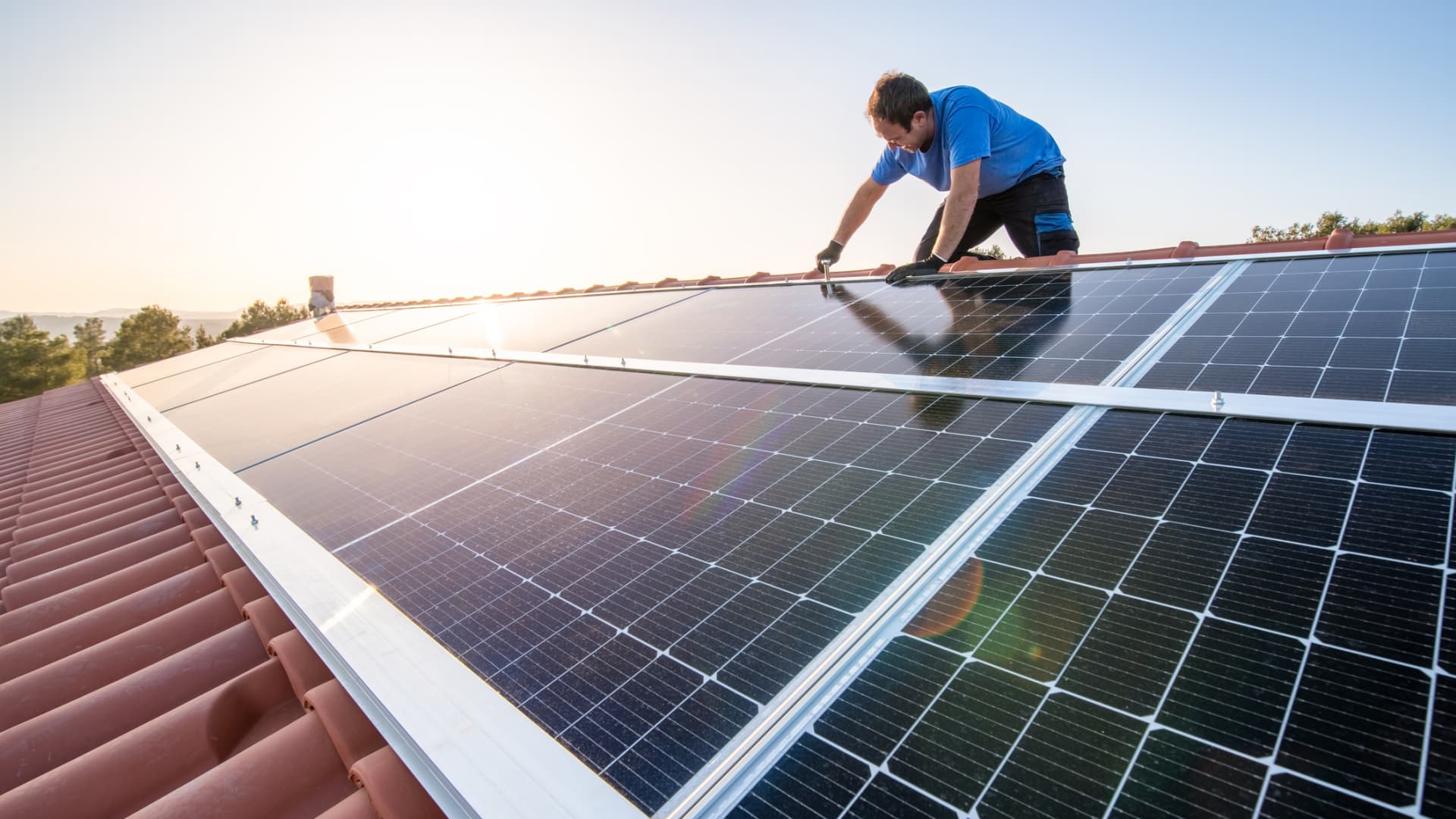One of the features Volkswagen presented at its recent Power Day event that people got most excited about was bi-directional charging. New Volkswagen models will be able to charge or discharge via Volkswagen wallboxes starting next year. This is something many EV enthusiasts have been into for many years, yet it is almost non-existent on the consumer market. I’m going to quickly run through reasons why it has been neglected as well as how much I think it could matter that Volkswagen is bringing bi-directional charging to market — but in the opposite order. Let’s start with the fun.
Volkswagen Vehicle-to-Home Discharging
Money maker: In theory, if a Volkswagen driver has free EV charging at work or local hot spots (stores, coffee shops, restaurants), they can collect free electricity and then go home and use it to power their homes. That’s money, plain and simple. I think that you can no longer find free charging easily in many markets, but look out for some interesting stories if this does become a thing. As for markets like mine, where almost all charging is free, I have to wonder how this will play out.
Disaster relief: In certain places, blackouts can be expected in the years to come due to hurricanes, snowstorms, heatwaves, over-reliance on old thermal power plants, and poor electricity transmission infrastructure (like not undergrounding electricity wires). If your car can power your home, that can extend your electricity supply a bit, and knowing the broader situation, it can potentially allow you to stretch that electricity out for great benefit. Furthermore, if you have rooftop solar panels, you may be able to charge your car during the day and discharge it in the evenings when the sun goes down and you still need electricity.
Considering that many people spend several thousand dollars on stationary energy storage units solely for this purpose, adding this capability to an electric vehicle with a large battery is a large value add for many buyers.
Using More Clean Renewable Energy
Using more of your own solar power: In the Volkswagen presentation, the possibility of storing electricity from your rooftop solar panels was indeed highlighted by Elke Temme, Head of Charging & Energy at Volkswagen Group Components. So, they are indicating that the tech they provide (including the bi-directional wallbox charger) will allow you to take electricity from your rooftop solar panel system and put it into your car, and then potentially shoot it into the house later in the day if needed or desired.
Storing more renewable energy on a national level: Depending on how much access grid operators have to these car batteries, they could store more electricity over-generated from renewable energy sources that is currently lost. Temme noted that 6,500 GWh a year of renewable energy is not used due to lack of energy storage. Grid operators could store that electricity in car batteries if they have the technical and regulatory ability to do so.
If you simply pumped that electricity into fully electric cars, 2.7 million cars could drive for a year on that electricity, Volkswagen indicates.
That said, this level of grid integration requires extra regulations and an agreement on pricing (using an owner’s car battery does indeed reduce its storage capacity, by slowly degrading the battery). Though, when Volkswagen is getting into this game and announcing it at a major Power Day presentation, you have to expect that regulators and grid operators (in Germany, at least) are involved and see a path forward.
Improving Grid Resilience, Cutting Costs & Emissions
Greater grid resilience: Again, depending on how much access grid operators have to these car batteries, they could also use the extra storage capacity to increase grid resilience and prevent aforementioned blackouts, compensating the car owners along the way.
But you don’t need full vehicle-to-grid integration to improve grid resilience. If enough individuals are prepared to just unhook from the grid and use their own batteries in difficult times, the grid won’t have so much weight on its shoulders, and Volkswagen intends to scale up the individual owner side of things with a focus on entities that control a lot of vehicles as well as individual owners. (See below.) And that could lead to other benefits.
Reduced costs, reduced emissions: “We want to scale up smart-storage approach to fleets, condos, and industry,” Temme said. “We will combine the local intelligence of the homes, condos, or industrial buildings with the global intelligence of the cloud, combining our mobile power banks with the intelligent energy management system. Using all relevant data, we will significantly reduce the need for grid expansion, and therefore the cost.” That’s quite an aim!
Naturally, cutting the need to develop more infrastructure and produce more electricity also means cutting emissions. “We believe that this will significantly improve the carbon footprint, and the energy bill.”
Volkswagen Pilot Project
Temme also noted that Volkswagen already has a pilot project underway at a brand new apartment building in Wolfsburg, Germany. The project involves 1250 apartments, 3000–4000 residents, 2 megawatt-hours (MWh) of energy storage capacity, 270 wallboxes, and 720 kWp of rooftop solar PV. Imagine that kind of project times 1,000, or times 10,000.
At this stage, I think we can assume Volkswagen is serious about some true disruption in the energy and auto sectors with this bi-directional charging tech and the potential it entails.
What Has Prevented Greater Availability & Use Of Bi-Directional Charging To Date?
The fundamental technical possibility of sending electricity from a car battery into a home or the grid is nothing new. However, as noted above, it hasn’t been a real-world possibility for electric vehicle owners except in niche programs and locations. Why not?
Electric car range: It’s only in the past couple of years that semi-affordable, mass-market, long-range cars have been selling at a good pace. Previously, batteries were too expensive and electric cars either had short range or very high prices. With very limited battery capacities and much more limited volumes of electric cars on the road, it was impractical to delve very far into this possibility. That is less of a concern now that battery technology has evolved, costs have come down, and volumes of EV batteries on the road are increasing fast.
EV battery degradation: Another concern is the simple rule that, the more you use a battery, the more it degrades (loses energy storage capacity). Related to the above matter, degrading a battery a bit more over time through vehicle-to-home or vehicle-to-grid bi-directional charging could come at a driving range hit that is just not worth it to EV owners. That has been a common presumption in the field. On the flip side of that equation, it wasn’t worth it to grid operators to pay EV drivers enough to make it worthwhile to use their car batteries for storage. Though, grid storage needs are growing at the same time that EV battery capacities are increasing and costs are coming down.
Regulations, regulations: Who loves regulations?! No, legalese and new (or old) regs are not fun for most of us. More importantly, they take careful planning, negotiation, and commitment to write and put into law. Vehicle-to-grid technology requires new regulations if it is going to be used on a large scale. That takes an enormous amount of work that was deemed premature up till now. Perhaps things are changing, though. Volkswagen Group appears to think they are.
Anything I’m missing here?



